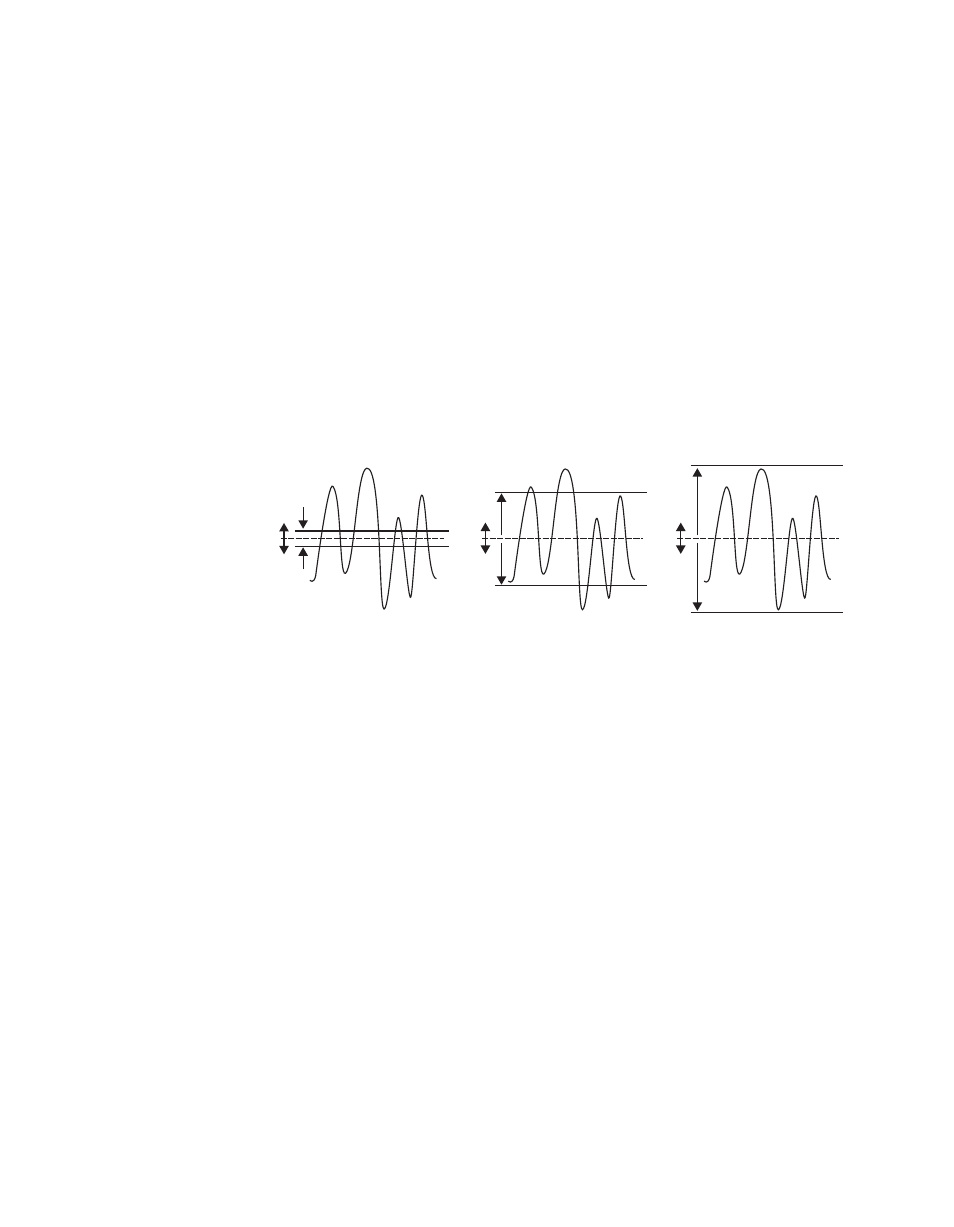High gain, low gain, and unity gain, Clip hi and clip lo – Grass Valley Kayak HD v.6.9.3 User Manual
Page 55

Kayak — User Manual
55
Keying
Clip and Gain control is appropriate for high gain keys (see below), to
easily adjust where the relatively hard transition from background to fill
occurs. In this mode, changing the Clip control moves the threshold up and
down without affecting Gain, which is adjusted separately with its own
Gain control.
High Gain, Low Gain, and Unity Gain
A high gain key has a narrow range, creating harder key edges. A low gain
key has a wider range, creating softer key edges. Linear keys typically use
minimal gain (also called unity gain) to completely preserve the soft edges
of the keys (
). Note that the Kayak system also supports keys that
go below unity gain.
Figure 20. Keying Gain Values
On the Kayak system, Gain has a percentage value. A Gain value of 50%
requires a luminance change of 50% of the distance between black and
white to produce a keying signal ranging from transparent to opaque. A
gain value of 100% (unity gain) uses the entire range between black and
white for this transparent to opaque transition. A gain value of 0% pro-
duces the hard key edges (a high gain key).
Clip Hi and Clip Lo
The Kayak system also supports a Clip Hi and Clip Lo mechanism. With
Clip Hi and Clip Lo, two thresholds are established. The upper threshold
specifies at what point video will be completely removed from the back-
ground, and the lower threshold determines at what point background
video will be retained completely intact.
High Gain
Low Gain
Clip
Gain
Gain
Gain
Clip
Unity Gain
Clip
0618_00_30_r1